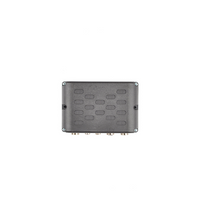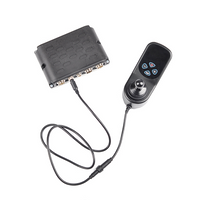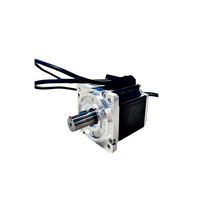- Home
-
- TF Integrated Workstation
- TT Integrated Station
- TS Single-Person Station
- TO Single-Person Station
- Advanced Office Table
- Manager Table
- Odette Conference Table
- Lifting White Board
- Lifting Podium
- Working Port
- Zen Standing Desk
- Lifting Coffee Table
- Home Standing Desk
- Nature Standing Desk
- Invictus Gaming Desk
- Study Desk
-
-
- Electric Hospital Bed
- Image Equipment
- Examination Bed/Clinic Bed
- Operation Table and Chair
- Infant Incubator
- Independent Weighing System
- Home Care Bed
- Patient Lift
- Wheelchair
- Toilet Lift
- Bath Lift
- Shower Trolley
- Smart Rollator Walker
- Ophthalmic Workstation
- Treatment Chair
- Facial Chair
- Traction Table
- Massage Chair
- OT Training Equipment
- Stand-up Application
- Rehabilitation Robot
-
-
- Photovoltaic Application
- Photothermal Application
- Energy Storage Container
- Tractor
- Seeder
- Fertilizer Spreader
- Harvester
- Rotary Cultivator
- Climate Control System
- Automatic Feeding System
- Excavator
- High Altitude Work Platform
- Garbage Truck
- Street Sweeper
- AMR Automated Guided Vehicle (AGV) and Autonomous Mobile Robot (AMR)
- Forklift Accessories
- Palletizing Collaborative Robots
- Packaging Machine
-
-
12 Volt Electric Wheelchair Motor Price
Views: 0 Author: Site Editor Publish Time: 2024-07-18 Origin: Site
What are the common types of wheelchair motors?
Wheelchair motors are crucial components that determine the performance and capabilities of power wheelchairs. Common types of wheelchair motors include:
1. Brushed DC Motors :
Advantages: Cost-effective, simple to control, reliable.
Disadvantages: Require regular maintenance due to brush wear, less efficient than brushless motors.
2. Brushless DC Motors (BLDC):
Advantages: More efficient, quieter, longer lifespan, less maintenance.
Disadvantages: More complex control systems, higher initial cost.
3. Servo Motors:
Advantages: High precision, excellent control over position, speed, and torque.
Disadvantages: Expensive, complex to integrate and control.
4. Gear Motors:
Advantages: Provide high torque, suitable for varying terrain.
Disadvantages: Can be heavy, may introduce noise and mechanical complexity.
5. Hub Motors:
Advantages: Integrated into the wheel, compact, efficient power transmission, fewer mechanical losses.
Disadvantages: Can be more difficult to repair or replace, limited torque compared to geared systems.
The choice of motor depends on various factors, including the desired performance, budget, and specific needs of the wheelchair user. For example, if you want to choose an electric wheelchair motor, you can choose JIECANG's wheelchair motor products.
What is the difference between 12 volt and 24 volt wheelchair motors?
The difference between 12-volt and 24-volt wheelchair motors primarily lies in their power delivery, efficiency, and application:

1. Power Output:
12 Volt Motors: Generally produce less power compared to 24-volt motors. Suitable for lighter applications and lower speed requirements.
24 Volt Motors: Provide more power, making them suitable for more demanding applications, such as heavier wheelchairs or those requiring higher speeds.
2. Current Draw:
12 Volt Motors: Draw more current to produce the same amount of power as a 24-volt motor. This can lead to higher heat generation and potential stress on the electrical components.
24 Volt Motors: Draw less current for the same power output, making them more efficient and less prone to overheating.
3. Battery Configuration:
12 Volt Motors: Typically use a single 12-volt battery or two 12-volt batteries in parallel.
24 Volt Motors: Usually require two 12-volt batteries connected in series to provide the necessary 24 volts. This configuration can offer more extended range and better performance.
4. Wiring and Components:
12 Volt Motors: May require thicker wiring to handle the higher current, which can add to the weight and complexity.
24 Volt Motors: Can use thinner wiring due to the lower current draw, potentially reducing weight and simplifying the electrical system.
5. Efficiency:
12 Volt Motors: Typically less efficient due to the higher current draw and associated losses.
24 Volt Motors: More efficient, with lower current draw resulting in less heat and better overall performance.
6. Application Suitability:
12 Volt Motors: Best for lightweight, compact wheelchairs or those with modest power needs.
24 Volt Motors: Ideal for heavy-duty wheelchairs, higher speed requirements, and extended use scenarios.
Choosing between a 12-volt and 24-volt motor depends on the specific needs of the wheelchair user, including power requirements, range, and efficiency considerations.
JIECANG wheelchair motors not only has 12V electric wheelchair motors, but also 24V and 36V wheelchair motors for you to choose from to suit different product application scenarios.
How much does an electric wheelchair motor usually cost?
The cost of an electric wheelchair motor can vary significantly based on several factors such as the type of motor, brand, power output, and additional features. Here are some general price ranges:
Brushed DC Motors:
Cost: $100 to $300
Typical Uses: Basic power wheelchairs, lower cost models.
Brushless DC Motors (BLDC):
Cost: $200 to $500
Typical Uses: Mid-range to high-end power wheelchairs, known for efficiency and longer lifespan.
Servo Motors:
Cost: $400 to $800
Typical Uses: High precision wheelchairs, specialized applications requiring precise control.
Gear Motors:
Cost: $150 to $400
Typical Uses: Power wheelchairs requiring high torque for rough terrain or heavy loads.
Hub Motors:
Cost: $300 to $600
Typical Uses: Compact and integrated designs, often found in modern or innovative wheelchair models.
These prices are only for the motors, which do not include additional components such as wheelchair motor controllers, batteries, and mounting. Taking these additional elements into account, the total cost of an electric wheelchair can be much higher. For professional or customized solutions, the price may exceed these ranges.
Related Articles
QUICK LINKS























